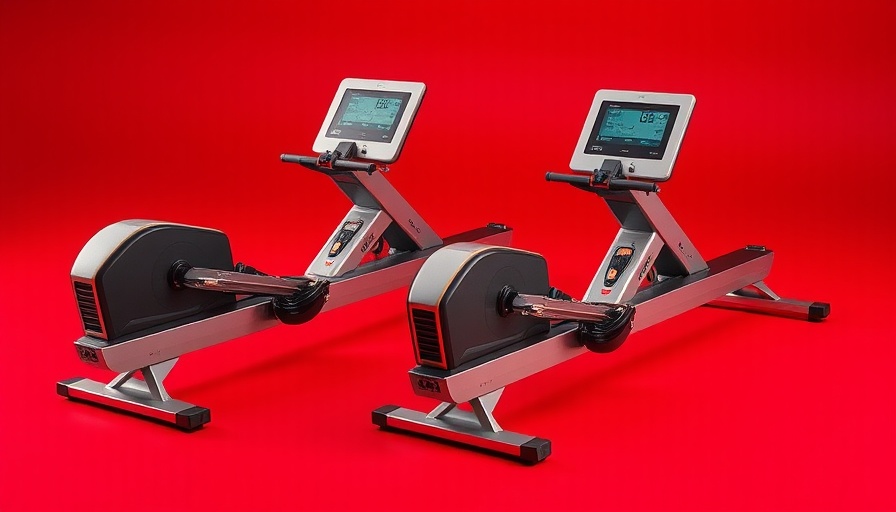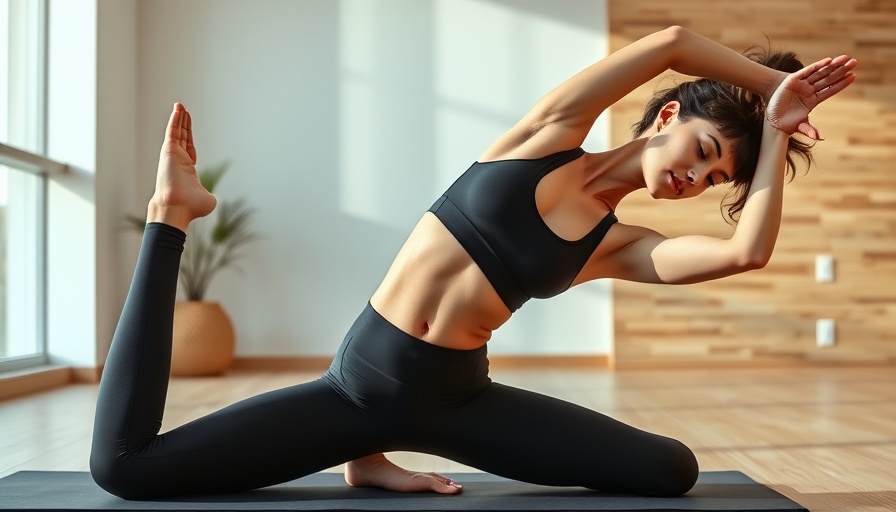
Transforming Spaces: Compact Rowing Machines for Small Homes
As more people seek efficient ways to stay fit without sacrificing valuable living space, compact rowing machines have emerged as crucial fitness tools. These machines offer all the advantages of traditional larger models but in a design that fits ideally into our increasingly smaller urban homes. By choosing the right equipment, fitness enthusiasts can seamlessly integrate workouts into their busy lives without feeling cramped.
Why Choose a Compact Rowing Machine?
For those in small apartments or homes, space is a premium. Compact rowing machines provide full-body workouts, targeting multiple muscle groups while only occupying a fraction of the floor space of classic gym equipment. They're perfect for anyone needing to juggle fitness with everyday life. Plus, with today’s technology, many compact models come equipped with features like digital screens and interactive workouts to keep users motivated.
Top Picks for 2025: The Best Compact Options
After extensive research and user feedback, we’ve narrowed down the best compact rowing machines on the market for 2025:
- Hydrow Wave: As the best overall compact rowing machine, the Hydrow Wave boasts high-tech features in a compact form factor. With its lightweight design, users can achieve an incredible rowing experience just 80 inches long. The rowing machine’s HD touchscreen makes it easy to follow along with interactive workouts, enhancing the user’s experience.
- NordicTrack RW700: This rowing machine stands out for its trainer-led workouts, making it perfect for those who appreciate guidance during their fitness routines. Compact, yet powerful, it is designed to fit comfortably in smaller living spaces.
- ProForm Pro R10: Best known for its folding capability, this machine is not only compact when in use but also when stored away. Its versatility allows it to serve as both an effective rowing machine and a convenient space-saver.
- Echelon Row-s: For those interested in cross-training, the Echelon Row-s offers a compact option that incorporates various training styles into one equipment piece.
- NordicTrack RW600: This model is celebrated for delivering high quality at an affordable price, making it the best value overall. It’s particularly great for those starting their fitness journey.
Maximize Your Workout with Multi-Functional Features
One of the characteristics that make these compact rowing machines so appealing is their technological advancements. Many come integrated with features allowing users to track their progress, such as heart rate monitors, calories burned, and workout duration. Incorporating such data enhances motivation and ensures each session brings users closer to their fitness goals. Interactive features like scenic rowing experiences can also transport users around the globe from the comfort of their homes.
Innovative Storage Solutions for Small Spaces
In addition to having a small footprint, many compact rowing machines now come with innovative storage solutions. For example, while the Hydrow Wave lacks a foldable structure, it compensates with upright storage options, optimizing space usage. Users can benefit from accessories like the Hydrow Wave Vertical Anchor, which saves space effectively while keeping the machine out of the way.
The Future of Home Fitness: Trends and Insights
As we move into 2025, the trend toward compact and multifunctional fitness equipment is likely to grow. With urban living spaces shrinking and more individuals seeking flexible workout options, these machines present an ideal solution for many. In addition, the rise of smart home technology suggests that future rowing machines may come with even more sophisticated features, such as AI-guided workouts or integrated health monitoring, pushing the boundaries of home fitness further.
Taking Action: Your Path to a Fitter Life
Choosing a compact rowing machine is more than just a purchase; it’s a commitment to a healthier lifestyle. If you’re looking to enhance your fitness routine while navigating space constraints, consider one of the models highlighted above. Start your fitness journey today and transform your space into a personal gym!
Join the Movement: Share Your Experience
We’d love to hear from you! Share your journey with a compact rowing machine and the impacts it has had on your life. Your story could inspire others in the community to make a healthy change today.
 Add Row
Add Row  Add
Add 




Write A Comment